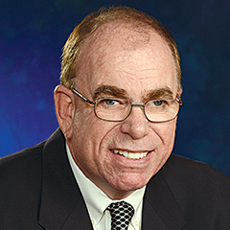
Almost 51 years ago today, President Johnson signed Medicare and Medicaid into law. As a result, the way our oldest and frailest citizens receive care has been radically transformed.
Almost immediately afterward, early-adapter operators rushed in. In their zeal to capture newly available Medicaid and Medicare funding streams, they quickly built “nursing homes” by the thousands. Focused on compliance rather than comfort, many of the new structures had the look and functionality of a hospital ward. Care in these settings tended to be minimally compliant, while the user experience was almost universally miserable.
Then the Paul Klaassens of the world came along, offering an “assisted living” alternative. This new-and-improved option would compete against nursing homes by promising a choice-based experience that put an emphasis on dignity and autonomy. The buildings also were a lot nicer.
Thus, the battle lines were drawn: Nursing homes for the elderly poor needing healthcare and housing, assisted living for those with fewer needs and larger bank accounts.
Times certainly have changed in the intervening decades. Many skilled care operators now essentially are in the post-acute rehab business. Assisted living largely has cornered the dementia-care market and become decidedly more expansive in scope.
But in many ways, the fight continues. And it may be about to intensify in ways that few were thinking about five decades ago.
For this we can thank the Centers for Medicare & Medicaid Services. Earlier this week, the agency unveiled a pilot Medicare program intended to change cardiac bundled payments for hospitals.
Among other things, the new rule essentially will force hospitals and health systems to forge new and better alliances with post-acute players. Yes, this has meant and will continue to mean nursing facilities. But guess what? It also might mean you.
That’s because under the emerging rules for coronary bypass surgery and treatment for heart attacks, acute care operators will receive a bundled payment that covers both the medical episode and related care for the 90 days following discharge.
As never before, hospitals will be at financial risk when it comes to post-acute care. That means that any potential post-acute care player — including senior living operators — can apply.
Getting into the post-acute game will challenge old beliefs and will demand significant investments. To be sure, it is not a universal slam dunk. Many senior living operators will need to think long and hard about whether they can thrive best as a hospitality- or healthcare-focused entity.
Surely, some readers will challenge my sanity for suggesting that a big part of this sector’s future will be as a hospital partner. I can understand the sentiment.
But times are changing. It wasn’t that long ago that many of the “founding fathers” of this field insisted they were not in the business of providing healthcare. How many operators can honestly make that claim today? Nor was it too long ago that Medicaid dollars were seen as dirty money that was best avoided.
Assisted living got where it is today largely by promising to do a better job than nursing homes. That same strategy — under admittedly different circumstances — also may be the key to future success.



